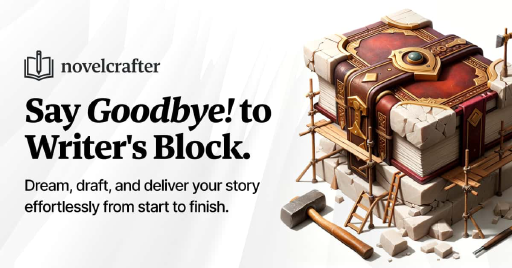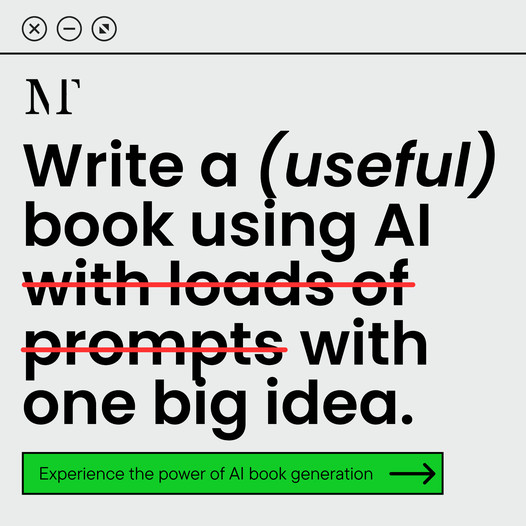Creating Realistic Characters
Making characters that leap off the page starts with giving ’em a bit of soul. Dive into what they’ve been through, and you’ve got yourself a story.
Understanding Character Backstories
Backstories: the unsung heroes of storytelling. Think of them like the backbones to your characters. They tell you where your character is coming from, what hardships knocked ’em around, and what makes ’em tick. Knowing this stuff is key if you want your characters to feel real and not just words on a page (Marisa Mohi).
Think about those events that set your character on their way. Even if a detailed history doesn’t make it into your story, knowing the background helps you nail the character’s reactions, making sure their actions feel right and hit home (Spines).
Here’s a cheat sheet for your character’s backstory:
| Element | What’s the Story? |
|---|---|
| Origins | Where’d your character grow up? |
| Family | What’s the family vibe like? |
| Key Events | Major happenings that left a mark? |
| Education | Book-smart or street-smart? |
| Relationships | Who’s had their back or stabbed it? |
Developing Specific Character Goals
Give your characters goals that pack a punch. Skip the clichés and dig deep into what makes their hearts beat faster. This makes their dreams unique and their struggles real (Marisa Mohi).
When you’re laying out what your character wants, keep in mind:
- Clarity: What exactly is your character chasing after?
- Motivation: What’s pushing them toward it? What’s the fire in their belly?
- Obstacles: What’s standing in their way?
- Growth: What will they learn from all this? How’s it gonna change ’em?
By hashing out a backstory and clear goals, your characters feel like people, not just personas. They’re gonna resonate with your readers. For more advice on crafting your next masterpiece, check out our guides on tips for newbie writers, improving storytelling, and creating gripping plots.
Embodying Realism in Characters
Building characters that jump off the page and into readers’ hearts involves creating personas filled with both quirks and room to grow. Here, you’ll learn how to weave authentic flaws into your characters and paint their journey of transformation vividly.
Incorporating Authentic Flaws
Flaws give your characters that human touch, making them relatable and fascinating. Characters carrying an air of perfection might actually bore your readers or worse, put them off. To imbue your characters with authenticity, sprinkle in flaws your readers can see themselves in.
| Type of Flaw | What It Means | Sample Character |
|---|---|---|
| Emotional Flaws | Trouble with emotions or opening up | Someone scared of getting hurt again after a rough breakup |
| Behavioral Flaws | Habits that signal deeper issues | A character dodging conflict by fibbing, even when it backfires |
| Moral Flaws | Struggles with right and wrong | Someone who chooses their job over their family every time |
Marisa Mohi reminds us that flaws make characters credible and kindle conflict—necessary fuel for character growth, pushing them to face and fix their weaknesses and, in turn, capture reader loyalty.
 What Poetry Feels Like
What Poetry Feels LikePortraying Growth and Development
Character evolution keeps your tale alive, sparking readers’ interest. While some characters might stay steady, your main ones should journey through trials and changes that move your story ahead.
| Growth Aspect | What It Involves | Case in Point |
|---|---|---|
| Personal Growth | Shifts in values or personal improvement | A commitment-phobe confronting and getting over their fears |
| Skills Development | Learning new tricks or gaining wisdom | A shy character finally finding their voice after a setback |
| Perspective Shift | New angles on life or goals | A revenge-seeker deciding to offer forgiveness instead |
Readers feel a deeper connection when they watch characters grapple with personal hurdles. As Marisa Mohi puts it, when characters tackle life’s bumps and soak in the experience, it adds layers to your story, turning up the intrigue.
As you spin your tale, let flaws and character transformation play their parts. These elements are the secret sauce to making characters tick. Explore how to create realistic characters and dive into writing advice for new authors for more storytelling insights. Plus, check out creative writing exercises to hone your characters to perfection.
Character Creation Fundamentals
Creating characters that feel real is like adding magic to your storytelling. When you breathe life into your creations, you’re inviting readers into a world they can’t easily leave behind.
Embracing Originality
Characters should be as unique as snowflakes—no two are the same. Sidestep those tired clichés and aim for a cast that feels like people you’d bump into at the coffee shop. Readers crave stories that break the mold and offer unexpected tales (Marisa Mohi). Want your characters to truly shine? Try these:
- Let real life inspire you—snippets of conversations or quirks from folks you know can spark ideas.
- Introduce diverse backgrounds and personalities—it’ll add layers and complexity.
- Shake-up typical traits and surprise readers.
When your characters mirror the messiness and wonder of actual humans, your story becomes a world where readers want to linger.
Exploring Character Dynamics
People, even fictional ones, don’t exist in a vacuum. They bump into each other, collaborate, and sometimes make a mess of things. This is the fuel that propels your story forward (Prodigy). Consider these dynamics:
| Dynamic Element | What’s Going On? |
|---|---|
| Conflicts | When characters clash, sparks fly and tension builds. |
| Alliances | Teaming up creates a solid foundation when characters find common ground. |
| Growth | Through interaction, characters grow and evolve, learning from one another. |
Make sure all the reactions and feelings your characters display have a solid base in who they are (Medium). When dialogue and actions feel genuine, readers are swept along for the ride, gaining insight into the individuals steering your narrative.
Honing in on originality and the subtle play between characters equips you with the tools to craft memorable stories. They’ll linger long after the last page. Looking to flex those writing muscles even further? Check out our beginner writing tips and dive into creative writing exercises.
Crafting Story Elements That Hook
Concocting characters that leap off the page ain’t just about their quirks. It’s about how they weave into the story and butt heads or bond with one another. Getting the hang of mixing character connections with a plot, while playing with point of view and tossing conflict in the mix, can zing up your tales in a big way.
Plot and Character Connections
In any yarn, how the plot and characters rub off on each other is a big deal. Every character should light a fire under the story, and every twist should spill beans about something or someone. The magic ingredients in any tale are a plot, setting, characters, a point of view, and a bit of conflict. These parts keep the wheels turning and the readers on the edge of their seats (Prodigy).
Let’s break it down a bit:
| Element | Idea |
|---|---|
| Characters | They nudge the story along with their antics and choices. |
| Plot | It’s all about the escapades that test the folks and goad them into changing. |
| Conflict | The rough patches—both inside and out—that make things more gripping. |
Characters that morph and learn as the tale unfolds can win over your readers. Highlighting their journey is key for them to hit home. Even characters who don’t change can work as contrasts, adding richness to your narrative (Marisa Mohi).
Mastering Point of View and Conflict
The lens through which you show your story changes how folks see character squabbles and alliances. Different angles can shed light on what drives a character, fuels their fears, and stirs their soul. Picking the right point of view lets you dive into both inner and outer clashes—crucial for building a character’s depth. Inner sparks fly from personal demons, whereas outer clashes arise with other folks or sticky situations (Medium).
By mixing angles, you can peek into every twist in a character’s journey. Here’s a quick look at points of view:
| Point of View | What’s the Spin? |
|---|---|
| First Person | The storyteller’s a character, creating a cozy connection with readers. |
| Third Person | The storyteller stands outside, offering a wide-angle view on different folks. |
| Omniscient | The storyteller’s all-knowing, showing a peek into everyone’s hustles and hustles. |
When drafting your characters, bear in mind that their flaws can spark major drama. Those hiccups lead to character-stoked issues—troubles arising from what they do and who they know. Using conflict not only keeps the action moving but also makes your characters richer (Well-Storied).
By zooming in on how plot and character connections gel, while juggling viewpoints and sparking some good ol’ conflict, you can mold characters that feel real and grip your readers. For more ideas on beefing up your tales, check out our insights on creating gripping plots and writing hacks for self-publishing.
Psychology of Characters
Bringing characters to life isn’t just about giving them a name or a face. It’s about diving into what makes them tick, piecing together their minds, and letting them resonate with others. Here’s how you can shape richly layered characters and illustrate their emotional roller-coasters to spice up your storytelling.
Building Multifaceted Character Profiles
Think of your characters as onions—yeah, onions. Peeling ’em back shows layers upon layers. Understanding these layers means digging into their entire timeline: the past that’s scarred them, the present they’re wrestling with, and the future they’re eyeing like a hawk. A full character sketch captures the drives, dreams, and dreads that shape their moves and moods in your tale. As emphasized by Medium, sifting through a character’s history injects them with life, making them flesh and bone instead of ink on paper.
Here’s what to ponder when fleshing out your character’s dossier:
| Element | Description |
|---|---|
| Backstory | Dive into past episodes that molded your character’s behavior and choices. |
| Motivations | Discover what gives them their kick; what are they chasing after? |
| Fears and Insecurities | Find the ghost in the closet that might shadow their actions. |
| Conflict | Figure out skirmishes outside (like foes or hurdles) and struggles inside (like phobias or urges). |
Stitch these elements together, and you’ve got yourself a character ready to rock the story with believable challenges and growth.
Showcasing Emotional Dynamics
You want characters that are like a playlist—good tunes and mood shifts. Readers stick around for changes in rhythm as long as they make sense. Characters should blend their emotional gear shifts naturally, aligning with who they are and what’s thrown at them, as noted by Medium. Folks dig emotional journeys that don’t yank them out of the experience but guide them along.
Here’s some storytelling hardware to build that emotional ride:
- Internal Monologue: Let characters spill their guts through thoughts, showing where they’re at emotionally.
- High-Stakes Situations: Push them with scenarios that reach their breaking points and coax out real feelings.
- Character Relationships: Illustrate how bonds with others nudge their emotions and drive reactions.
Reveal your characters’ psychology by focusing on these internal and external tug-of-wars. Their struggles, painted by past decisions and present circumstances, give them depth and make them relatable, drawing the reader deeper into their world. For more tips on cultivating genuine characters, check out our guides on how to create emotional characters and how to craft memorable characters.
Impactful Character Flaws
When crafting characters that pop off the page, it’s not enough to just give them colorful backstories or quirky habits. They’ve got to have a few cracks, too — imperfections that make them real and keep the reader hooked. These flaws are what turn paper people into believable beings, sparking conflicts and paving the way for growth.
Types of Character Flaws
To weave a story that sticks, you’ve got to know your flaws. Here’s a cheat sheet on the most memorable ones:
| Flaw Type | What It Says About ‘Em |
|---|---|
| Emotional Flaw | Can’t quite control feelings like anger, jealousy, or being insecure. |
| Behavioral Flaw | Stuck in a loop of bad habits like putting things off or getting hooked on something. |
| Social Flaw | Finds it tricky to make or keep pals. |
| Moral Flaw | Struggles with doing the right thing, like fibbing or double-crossing. |
| Intellectual Flaw | Sees things in a narrow way, causing bad choices. |
Using these flaws as stepping stones can help characters leap off the page. Readers feel a kinship with imperfect characters, who reflect a bit of who they are. If you need some pointers on fleshing out characters, check out our guide on how to create emotional characters.
Sparking Conflict with Flaws
Character flaws are the spice in the mix, stirring up tension and drama both inside and out. Internal struggles pop up when a flaw trips a character up on their way to getting what they want. And when those flaws start impacting others, you’ve got external conflict ripe for the picking.
Picture this: A character eaten up by jealousy. This flaw could push them to throw a wrench in their buddy’s success, frazzling their bond and setting off fireworks — prime external conflict. Meanwhile, on the inside, they’re wrestling with that green-eyed monster, leading to some soul-searching and character growth as the tale unfolds.
Nailing these flaws hooks the reader deeper. Characters battling inner demons resonate with us all, driving us to turn the page. For more words of wisdom on beefing up your story chops, swing by our articles on writing tips for self-publishing and how to write better stories.
When all’s said and done, adding juicy flaws doesn’t just enrich your characters. It turbocharges your story, making those character journeys something readers can’t forget.


 Grab my poetry book, 'we're all just wanderers in the end' Here
Grab my poetry book, 'we're all just wanderers in the end' Here AD: Your Book Finally Written...
AD: Your Book Finally Written...